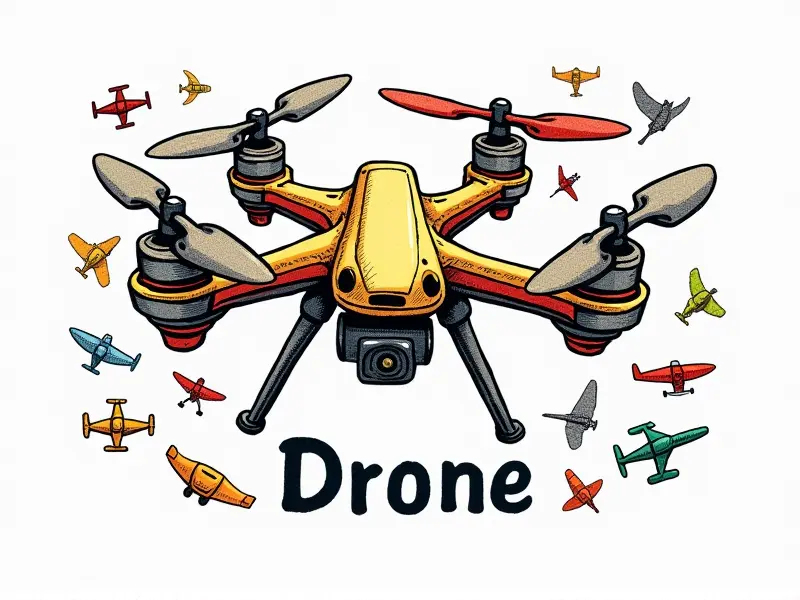Battery life of FPV drones?

Maximizing Flight Time with FPV Drones
The battery life of an FPV (First Person View) drone is a critical factor that determines how long you can enjoy your flight. Maximizing the flight time involves selecting the right battery, understanding its capacity, and maintaining it properly to ensure optimal performance.
Best Battery Options for FPV Racing Drones
Choosing the best battery for your FPV racing drone is crucial for achieving high speeds and extended flight times. Lithium Polymer (LiPo) batteries are the most common choice due to their high energy density, lightweight nature, and ability to provide sustained power.
Understanding FPV Drone Battery Capacity
The capacity of an FPV drone battery is measured in milliampere-hours (mAh). Higher mAh ratings mean more charge stored in the battery, which directly correlates with longer flight times. However, it's important to balance this against weight considerations and voltage requirements.
Common Issues Shortening FPV Drone Battery Life
Several factors can reduce the lifespan of your drone’s battery:
- Overcharging or Overdischarging: This damages the cells inside the battery, reducing its overall capacity and longevity.
- Poor Charging Practices: Using low-quality chargers or failing to balance charge can lead to inconsistent performance and reduced lifespan.
- Physical Damage: Dropping your drone or exposing it to extreme temperatures can cause internal damage, affecting battery life.
Tips to Boost FPV Drone Battery Life
To extend the life of your FPV drone's battery, follow these tips:
- Use High-Quality Batteries: Invest in reputable brands known for their durability and performance.
- Maintain Proper Charging Habits: Charge batteries at room temperature using a balanced charger to ensure even distribution of charge across all cells.
- Avoid Extreme Temperatures: Store your batteries in a cool, dry place away from direct sunlight or heat sources.
Extend Your FPV Drone's Lifespan
To extend the overall lifespan of your drone, including its battery, consider these maintenance practices:
- Regular Inspections: Check for any signs of wear or damage before each flight.
- Proper Storage: Store batteries in a fire-safe container when not in use.
- Follow Manufacturer Guidelines: Adhere to the recommended charging and usage instructions provided by the battery manufacturer.
FPV Drone Battery Maintenance Guide
Maintaining your FPV drone's battery is essential for long-term performance. Here’s a quick guide:
- Discharge Properly: Always discharge batteries to their recommended level before storage.
- Battery Balancing: Use a balancer charger to ensure all cells are charged evenly.
- Clean Connections: Keep battery terminals clean and free from corrosion.
Optimize Battery Efficiency for FPV Racing
To optimize your battery efficiency during racing, consider the following tips:
- Select Appropriate C Ratings: Higher C ratings provide more power but may shorten battery life. Choose a balance that suits your needs.
- Monitor Voltage Levels: Keep an eye on voltage levels during flight to avoid overdischarging.
- Use Efficient Propellers and Motors: Optimize your drone’s components for maximum efficiency, reducing power consumption.
Increase Flight Duration in FPV Drones
To increase the duration of your flights, focus on these strategies:
- Select Larger Capacity Batteries: Opt for batteries with higher mAh ratings within weight limits.
- Reduce Weight: Minimize unnecessary components to reduce overall drone weight and improve efficiency.
- Optimize Flight Patterns: Plan your flight paths efficiently to minimize energy consumption.
Impact of Weather on FPV Drone Battery Life
The weather can significantly affect the performance and lifespan of your FPV drone’s battery. Cold temperatures reduce capacity, while heat increases internal resistance and voltage drop:
- Cold Temperatures: Batteries may not deliver full power in cold conditions.
- Heat Exposure: High temperatures can degrade battery performance over time.
Understanding C Ratings in FPV Drone Batteries
The C rating of an LiPo battery indicates its discharge rate. A higher C rating means the battery can deliver more power at once, which is crucial for high-performance applications like racing:
- C Rating Definition: The C rating is a multiple of the battery's capacity (mAh). For example, a 3S 2000 mAh battery with a 45C rating can deliver up to 90A.
- Selecting Appropriate Ratings: Choose a C rating that matches your drone’s power requirements without compromising longevity.
Conclusion
Maintaining optimal battery life for your FPV drone is crucial for enjoying extended flight times and high performance. By selecting the right batteries, understanding their capacity, and following proper maintenance practices, you can ensure that your drone remains in top condition throughout its lifespan.

